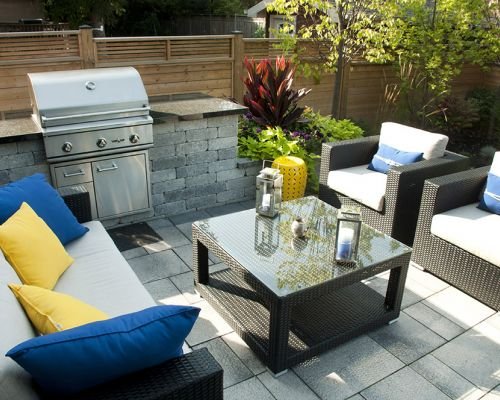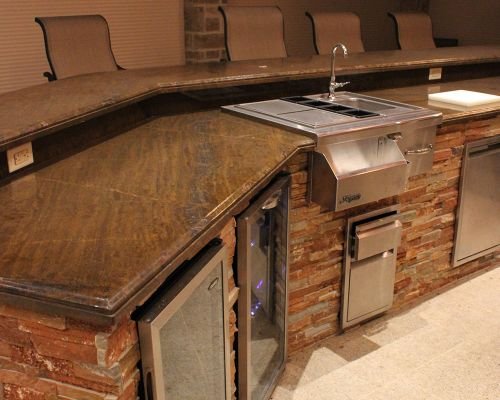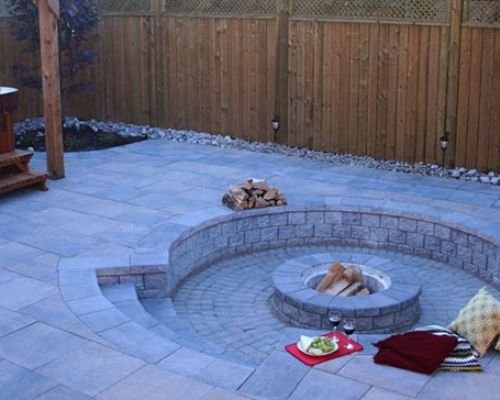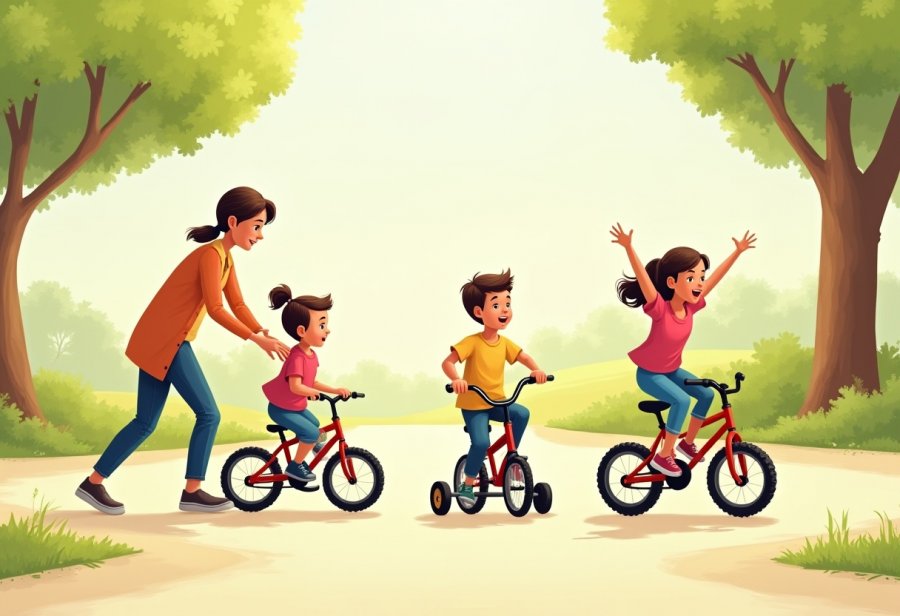Imagine transforming a modest Toronto yard into a breathtaking oasis that balances beauty, sustainability, and personal expression. How can homeowners craft outdoor retreats that are not only visually stunning but also environmentally responsible? This guide reveals that the secret lies in thoughtful design, native plants, eco-friendly materials, and resilient features tailored to Toronto’s climate. It explores how small changes—like permeable paving or pollinator gardens—can create impactful, long-lasting landscapes. With clear strategies for planning, execution, and ongoing maintenance, homeowners are empowered to turn their visions into reality while supporting local ecosystems. But the question remains: how do you ensure these outdoor retreats remain vibrant and manageable over time? The answer is a blend of expert planning, sustainable practices, and attentive care that results in personalized sanctuaries—spaces that nurture both the mind and environment, reflecting the homeowner’s heart and values. Ready to elevate your yard into a true sanctuary?
Transform Your Toronto Outdoor Space with Expert Landscaping Solutions
Looking to enhance your Toronto backyard? Toronto Landscape & Design (TLD) offers stunning backyard makeover services tailored to your outdoor needs. Our award-winning designers consider every detail, from natural stone features and water gardens to efficient irrigation systems and durable retaining walls. Whether you’re dreaming of a tranquil retreat or a vibrant entertaining area, TLD specializes in creating personalized outdoor spaces that elevate your property’s beauty and functionality. Contact us today at mike@torontolandscapedesign.com or call 1.416.644.0499 to start your transformation or learn more about our comprehensive landscaping services.

Transform Your Toronto Yard into a Personal Oasis
Transforming Toronto yards into inviting outdoor retreats has become more than just a trend; it’s a way for homeowners to craft personal sanctuaries right outside their back doors. In a city where outdoor space can be limited, making the most of what’s available requires thoughtful design that balances beauty with practicality. A well-designed backyard isn’t just about aesthetics—it’s about creating a functional, relaxing oasis that reflects the homeowner’s personality and lifestyle. Whether it’s a cozy corner for quiet reflection or a vibrant space for entertaining friends, a thoughtfully transformed yard can significantly enhance everyday life.
Today’s urban environment places a high value on outdoor spaces that support both wellness and sustainability. Many Toronto residents are eager to turn their yards into eco-friendly retreats that blend seamlessly with their surroundings. This involves selecting native plants, using sustainable materials, and incorporating features that support local ecosystems. The goal is to transform a simple backyard into a space that feels both personal and environmentally responsible, offering a refuge from city noise while contributing positively to the local environment.
Creating these outdoor sanctuaries goes beyond picking pretty plants or trendy furniture. It’s about understanding how the space will be used and what kind of atmosphere the homeowner desires. Every element, from layout to material choice, should be tailored to reflect their unique preferences. Listening carefully to client needs helps ensure that the final design isn’t just visually appealing but also meaningful—a true extension of their home and their personality.
In Toronto’s climate, durability and resilience are essential. That’s why sustainable landscape design emphasizes native plants and eco-friendly materials that can withstand seasonal shifts. Features like permeable paving and water-smart systems help manage stormwater naturally, reducing runoff and supporting groundwater recharge. These choices not only promote a healthier environment but also make yard maintenance easier and more sustainable over time, ensuring the outdoor space remains vibrant and functional for years to come.
Ultimately, transforming yards into outdoor retreats is about creating a space that resonates with the homeowner’s values and lifestyle. It’s a blend of aesthetic appeal, ecological mindfulness, and personal expression. When every detail is thoughtfully considered and executed, the result is a backyard that feels both beautiful and authentic—a genuine reflection of the homeowner’s vision and a sanctuary that nurtures both mind and environment.
Core Principles of Eco-Friendly Landscape Design
Sustainable landscape design aims to create outdoor spaces that are not only beautiful but also environmentally responsible. Central to this approach is choosing native plants that naturally thrive in Toronto’s climate and soil. These plants require less water, fewer fertilizers, and minimal chemical treatments, making the yard easier to care for while supporting local ecosystems. By working with what the land already offers, homeowners can reduce their ecological footprint and encourage biodiversity.
Using eco-friendly materials is another key principle. Recycled, locally sourced stone, wood, and pavers help lower the environmental impact of construction and renovations. Incorporating permeable surfaces like gravel or permeable pavers allows rainwater to seep into the ground naturally, helping to manage stormwater, prevent erosion, and replenish groundwater. These materials blend functionality with aesthetics, creating a landscape that’s both attractive and eco-conscious.
Water conservation plays a vital role in sustainable design. Installing rain gardens and using drip irrigation systems ensure plants receive adequate moisture without wasting resources. These features help manage stormwater runoff, protect waterways, and reduce the need for frequent watering. Adding shade trees not only enhances visual appeal but also reduces the need for artificial cooling and watering, further supporting water efficiency.
Design resilience is crucial, especially in Toronto’s seasonal climate. Native plants are naturally adapted to withstand temperature swings, pests, and diseases, minimizing the need for chemical interventions. This resilience keeps landscapes vibrant throughout the year and reduces ongoing maintenance efforts. Choosing hardy, climate-appropriate materials ensures the yard remains durable and sustainable over time, saving effort and resources in the long run.
Creating wildlife-friendly features enhances ecological value. Pollinator gardens and habitat zones for birds and butterflies attract beneficial insects and animals, supporting local biodiversity. These elements turn the yard into a lively ecosystem that benefits both residents and the environment, adding natural beauty and purpose to the space.
Sustainable landscape design isn’t just about reducing harm; it’s about fostering healthy, thriving outdoor environments. By integrating native plants, eco-friendly materials, water-smart features, and habitats, homeowners develop spaces that are low-maintenance, resilient, and aligned with environmental goals. This thoughtful approach results in landscapes that remain vibrant and functional for years, contributing to a greener Toronto.
Incorporating these principles into yard design encourages a shift toward more conscious living. It’s a way to enjoy a beautiful outdoor space while respecting the planet. The combination of aesthetic appeal and ecological responsibility creates a harmony that benefits residents and local ecosystems alike. This balanced approach ensures that every backyard becomes a sustainable retreat, supporting a healthier environment for generations to come.

Planning and Executing Your Backyard Transformation
Planning a backyard transformation starts with a clear understanding of the existing space. Take time to assess the layout, note any current features, and identify limitations or challenges. This foundation helps you pinpoint opportunities for improvement and set realistic goals. Knowing what’s already there guides decisions about what to preserve, enhance, or completely redesign, ensuring the project moves forward with purpose.
Next, engaging with the homeowner to understand their vision is essential. Listen carefully to their preferences—whether they want a tranquil retreat, an entertainment area, or a lush garden—and incorporate those ideas into your plan. Clear communication early on builds trust and ensures the final design aligns with their lifestyle and personality. When clients feel heard, they become more invested in the process and outcomes.
Developing a detailed design plan comes next. Use sketches, digital models, or mood boards to illustrate concepts, native plant selections, and eco-friendly features. Visual tools help clients grasp the potential of the space and make informed adjustments before work begins. This step saves time and resources by preventing costly changes later, and it ensures everyone shares a common vision.
Budgeting and scheduling are critical for keeping the project on track. Break the transformation into phases, prioritizing impactful elements like native plantings or sustainable pathways. Starting with these features provides quick visual wins that motivate homeowners to stay committed. A realistic timeline and clear milestones help manage expectations and coordinate with contractors and suppliers effectively.
Effective project management involves regular site visits, ongoing updates, and open communication. Collaborate with experienced professionals who understand sustainable practices—this guarantees quality work that aligns with eco-conscious goals. Being adaptable during installation allows for adjustments if unforeseen issues arise, ensuring the project remains aligned with the original vision.
Involving the homeowner throughout the process fosters a sense of ownership. Sharing progress, seeking feedback, and making minor tweaks help ensure the final result genuinely reflects their personality and needs. This collaborative approach transforms a generic landscape into a personalized outdoor sanctuary that feels both functional and meaningful.
Choosing durable, climate-appropriate materials and resilient native plants is key to long-term success. Phasing the installation thoughtfully, starting with native species and eco-friendly features, creates a foundation that’s both beautiful and sustainable. These choices reduce ongoing maintenance, withstand seasonal changes, and keep the landscape vibrant over time.
Finally, planning for ongoing care ensures the yard’s longevity. Simple routines like mulching, pruning, and watering during the early morning hours keep plants healthy. Educating clients on sustainable maintenance practices encourages them to care for their outdoor space responsibly. With consistent attention and a focus on resilience, their backyard will continue to evolve into a thriving, beautiful retreat that reflects their vision and respects the environment.
To further support the long-term success of your backyard transformation, consider exploring resources on sustainable landscaping practices. For example, you might find helpful information on sustainable landscaping at sustainable landscaping, which offers insights into eco-friendly design and maintenance techniques that complement your project’s goals.
Real-World Examples and Practical Tips for Yard Makeovers
Transforming yards into inviting outdoor retreats is about turning ideas into reality through practical, achievable steps. Take, for example, a Toronto homeowner aiming for a lush, low-maintenance garden. Selecting native plants like milkweed or bee balm not only supports local pollinators but also reduces watering and chemical needs. Incorporating permeable paving for pathways manages stormwater naturally while adding visual interest. These thoughtful material choices demonstrate how functionality and beauty can go hand in hand.
Case studies reveal how small layout adjustments can create big impacts. Adding a cozy fire pit or a tranquil water feature can instantly elevate a backyard from ordinary to extraordinary. Early planning of these elements ensures they blend seamlessly with the overall design, avoiding clutter and maintaining balance. When executed with care, these features become focal points that encourage outdoor use and reflect personal style.
Effective project management keeps everything on track. Breaking the transformation into phases—starting with native plantings or eco-friendly lighting—provides quick wins that motivate homeowners to stay committed. Regular site visits and ongoing communication with contractors who understand sustainable practices help catch issues early and ensure quality work. Flexibility during installation allows for adjustments, making the process smoother and the results more aligned with the original vision.
Durability is key for long-lasting results. Choosing eco-friendly, weather-resistant materials like recycled wood, permeable pavers, or locally sourced stone ensures the landscape can withstand Toronto’s seasonal shifts. These materials often require less maintenance, saving time and effort over the years. Pairing resilient native plants with tough paving creates a landscape that’s both beautiful and built to last, maintaining its appeal without constant intervention.
Beyond installation, ongoing care is vital. Simple routines like mulching around plants, pruning at the right times, and watering early in the morning keep the landscape vibrant. Educating clients on eco-friendly maintenance practices encourages responsible stewardship, helping their outdoor retreat thrive year after year. Consistent attention preserves the beauty and ecological balance of the space, turning it into a true sanctuary.
By focusing on real-world examples and practical tips, homeowners can see how thoughtful planning and execution lead to stunning, sustainable yards. From selecting the right plants to managing the installation process carefully, each step builds toward a personalized outdoor space that balances beauty, function, and eco-consciousness. This approach transforms a simple project into a lasting retreat—an inviting haven that reflects the homeowner’s heart while respecting the environment.

Crafting Beautiful, Sustainable Retreats That Reflect Your Lifestyle
Creating a beautiful, sustainable outdoor retreat in Toronto is about more than just aesthetic appeal—it’s a careful balance between visual harmony, ecological responsibility, and the unique needs of each homeowner. When design choices prioritize native plants, eco-friendly materials, and functional features, the result is a space that feels welcoming, supports local ecosystems, and requires less ongoing effort. This blend of beauty and sustainability not only enhances the yard’s appearance but also ensures it remains vibrant and manageable over time.
Listening to homeowners’ desires throughout the process is essential. Their vision—whether for a lush garden, a cozy sitting area, or an entertainment space—guides every decision, transforming the yard from a generic landscape into a true reflection of their personality. When their ideas are woven into the design, the outdoor space becomes more than just beautiful; it becomes a personal sanctuary that resonates deeply with their lifestyle and values.
Eco-friendly practices amplify the long-term health of the landscape. Choosing natural, recycled, and locally sourced materials, along with water-smart features like rain gardens and drip irrigation, minimizes resource waste while supporting environmental goals. Selecting durable, climate-appropriate plants and resilient materials ensures the yard can withstand Toronto’s seasonal shifts, reducing maintenance and preserving its vibrancy year-round.
Designing with purpose means creating an outdoor space that is as functional as it is attractive. Thoughtful layout, focal points, layered planting, and sustainable lighting work together to craft an inviting environment for relaxation, socializing, or enjoying nature. When these elements come together seamlessly, they produce a retreat that is both a visual delight and a practical haven—an outdoor extension of the home that nurtures both the mind and the environment.
Maintaining this harmony over time depends on ongoing care and mindful management. Simple routines like mulching, pruning, and watering early in the morning help keep plants healthy and landscapes vibrant. By adopting eco-conscious maintenance habits and staying attentive to the landscape’s evolving needs, homeowners can enjoy a resilient, beautiful retreat for years to come—one that reflects their heart, respects the environment, and continues to inspire.







